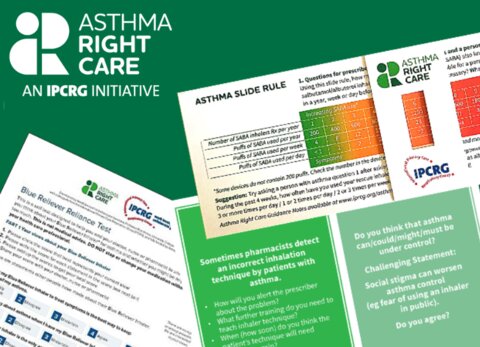A response to the potential role of local pharmacies to assess asthma control: an Italian cross-sectional study

A response to The potential role of local pharmacies to assess asthma control: an Italian cross-sectional study
Original article available at: https://bmcpublichealth.biomedcentral.com/articles/10.1186/s12889-020-10080-1
Written by Darush Attar-Zadeh with input from the rest of the IPCRG Asthma Right Care community pharmacy team: Ema Paulino, Francesc Moranta Ribas and Garry McDonald.
What an excellent cross-sectional study aimed at providing a picture of the relationship between asthma severity and control, in community pharmacies within the health district of the city of Verona (Veneto Region, North-Eastern Italy).
I would completely agree, and various studies attest to this, that asthma control is unsatisfactory across the globe, and healthcare systems could optimise the use of frontline community pharmacies in improving asthma care.
Local pharmacies can provide critical cost-effective support to screen patients for their risk of asthma exacerbations, increase their knowledge of the disease, assess asthma control, improve inhalation techniques and follow up their treatment adherence as you suggest. Ultimately, pharmacists can add value along the patient journey, potentially decreasing time to diagnosis, and increasing diagnosed patients’ clinical outcomes and their health-related quality of life.
Utilising self-report tools like the Asthma Control Test (ACT) is useful and can be carried out in a timely manner as part of a respiratory consultation. The community pharmacies are not only usually conveniently located for patients, but the environment is also set up (many with private consultation rooms or private areas) to discuss medicines with skilled professionals. Pharmacy teams can go seamlessly beyond initial ACT assessment and explore patient beliefs, expectations and preferences. IPCRG Asthma Right Care resources will aid this.
As an example, the Asthma Right Care SABA slide rule (developed by the IPCRG) was utilised in a community pharmacy project in North West London in 20191 following the ACT to ascertain the number of SABA puffs a person would use in a typical day, week and canisters per year. Widely used by patients and clinicians it provides a traffic light signal to help people ‘know their number’. The simple to use slide rule is not only a great conversation starter to increase awareness of potentially harmful SABA over-reliance, but aids positive behaviour change talk with the use of thought-provoking scaling questions.
The Reliever Reliance Test is another tool endorsed by the IPCRG that can be filled by patients in the community pharmacy (useful after an ACT). It has 5 easy to understand questions that delve into a person’s beliefs about SABA. In a non-judgmental manner it may help steer the person to become less reliant on a treatment meant to be reserved for ‘emergency use’. In all severities of asthma there is underlying inflammation and the latest GINA guidelines highlight that SABA shouldn’t be recommended alone.
It was interesting to see your data on patient reported adherence and agree that it’s pertinent to explore this data further. Many real-life studies show that adherence to preventer treatment varies between 20-54%2. Is it possible that the patient misinterpreted the question as regular use of the emergency reliever inhaler (as the question in the paper doesn’t refer to preventative treatment)?
In the North West London study community pharmacy teams assessed patients self-reported use of emergency SABA inhaler and patient medication records (PMR) to see if there was disparity. The study showed an under-reporting of SABA canister use per year by patients (but was not statistically significant). In my opinion both self-report and PMR values are useful rather than one or the other as suggested in your paper.
Community pharmacy professionals are sometimes the only healthcare professional a patient will encounter. Many people with asthma may not attend primary care appointments and could be unknowingly putting themselves at risk of living with day and night symptoms sometimes unfortunately with episodic attacks. In addition, patients continue to have very low expectations regarding asthma outcomes, especially those with poor asthma control3. With skilled and knowledgeable patients at the centre of their own care and the support of the whole multi-disciplinary team we can help people live better with asthma.
Policy makers and commissioners will hopefully not only recognise the valuable roles pharmacy teams can offer, but also provide sufficient resources to motivated skilled professionals.
Further research like your excellent piece will provide even more evidence on the support we can offer patients with respiratory conditions. ‘Asthma Right Care’ resources I’m sure will be valued by pharmacy teams and patients.
1. In a recent study involving 19 community pharmacies in North West London with 98 patients, average age 50-59, 68% female, 47% White, 17% smokers the average ACT score was 17.98 not so dissimilar to the mean average in your study of 18. Presented at BPS, PCRS and soon BTS winter
2. https://erj.ersjournals.com/content/45/2/396